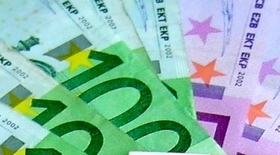How much should something cost and what does that say about it?
 When you’re starting a new business or bringing a new product to the market one of the first things to consider is how much to charge for it.
When you’re starting a new business or bringing a new product to the market one of the first things to consider is how much to charge for it.
The right pricing strategy is crucial to the success of any business. In its most simple form you need to define the boundaries between too cheap and too expensive – too low it won’t be profitable and too high and people won’t buy it. However, there’s so much more to it than that of course. The price you give your product or service will position itself in people’s mind as either the budget option, the middle of the road or the “quality” or the “premium” option so you need to decide where your product should sit in that pricing hierarchy.
Some clever people have made a fortune repackaging a fairly average product as premium and got away with selling it as more expensive purely through marketing. Stella Artois’ “reassuringly expensive” slogan is a good example of this. It really depends on your market and your consumer whether or not you can get away with positioning a product as premium, so do your research carefully before you take this route.
An interesting link is between price and expectations. We know, that if we go for the super basic range at our supermarket or buy clothes at one of the bargain basement places, that the quality is unlikely to be good and we make that choice. For many of us we’re happy with throwing away a cheap top after one season and so we pay accordingly and we won’t complain if it doesn’t wash so well. However, Seth Godin has written a post recently which compares price to value on and offline and comes up with some interesting conclusions.
He shows that the way we evaluate content and experiences e.g. a book, a movie, a concert is different to how we would evaluate other goods and services, as we’ve had to commit our time and energy to experiencing that thing. He says:
“For any other good or service, the value of a free alternative that was any good would be infinite–free airplane tickets, free dinners at the cafe… When it comes to content, though, we rarely compare the experience with other content at a similar price. We compare it to perfect.
People walking out of the afternoon bargain matinee at the movies don’t cut the film any slack because it was half price. Critics piling on to a music video on YouTube never mention the fact that HEY IT WAS FREE. There is no thrift store for content. Sure, we can get an old movie for ninety-nine cents, but if we hate it, it doesn’t matter how cheap it was. If we’re going to spend time, apparently, it better be perfect, the best there ever was, regardless of price.
This isn’t true for cars, potato chips, air travel, worker’s comp insurance…”
This is interesting because it makes us think again about the online pricing strategy which so often offers content and information for free to encourage mass consumption and we hope mass approval. “Free gets you mass. Free, though, isn’t always the price that will help you achieve your goals.
Price is often a signalling mechanism, and perhaps nowhere more than in the area of content. Free enables your idea to spread, price, on the other hand, signals individuals and often ends up putting your idea in the right place. Mass shouldn’t always be the goal. Impact may matter more.”
Thanks Seth, another great thing to think about! Click here to read the full post.
Intelligent and well placed pricing can make a difference between a successful product/service and a failure both on and offline. Understanding your market and your competition is crucial to making an informed and correct decision. If you’re launching a business in this area make sure your Costa del Sol Marketing Strategy is right and don’t just assume it will be the same as it was at home. This is a very different market and prices and overall marketing strategy must be changed accordingly! Contact us today to take advantage of our free marketing brainstorm session to discuss more about this and other marketing issues info@shawmarketingservices.com


